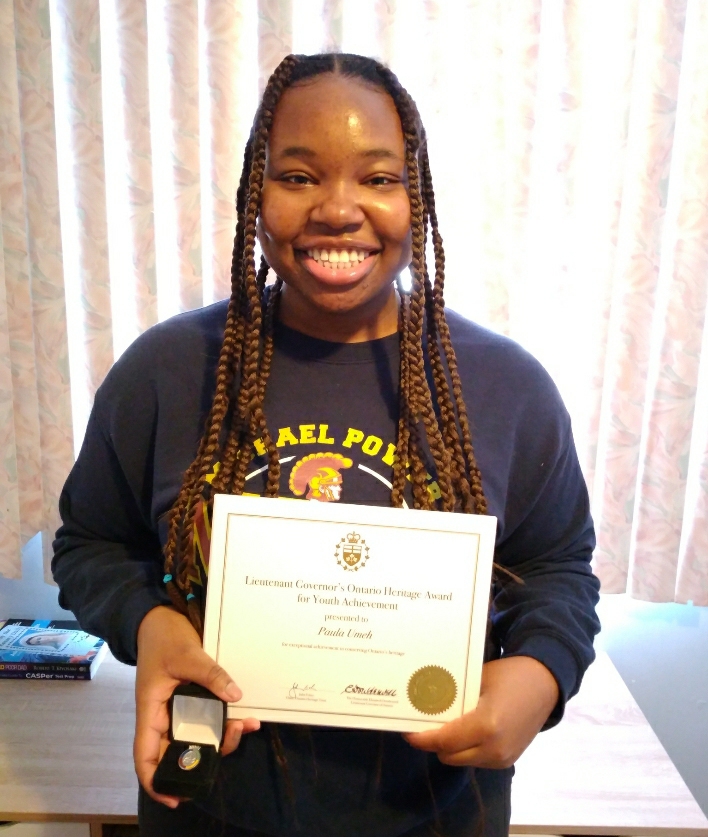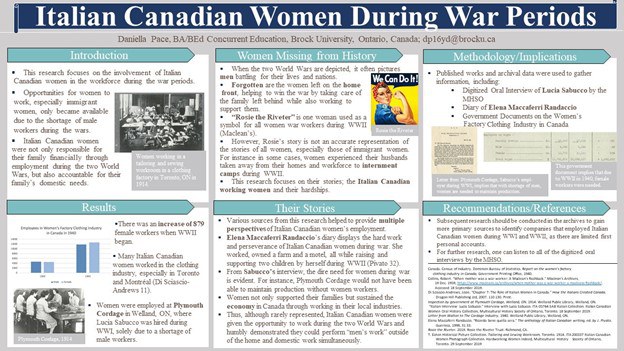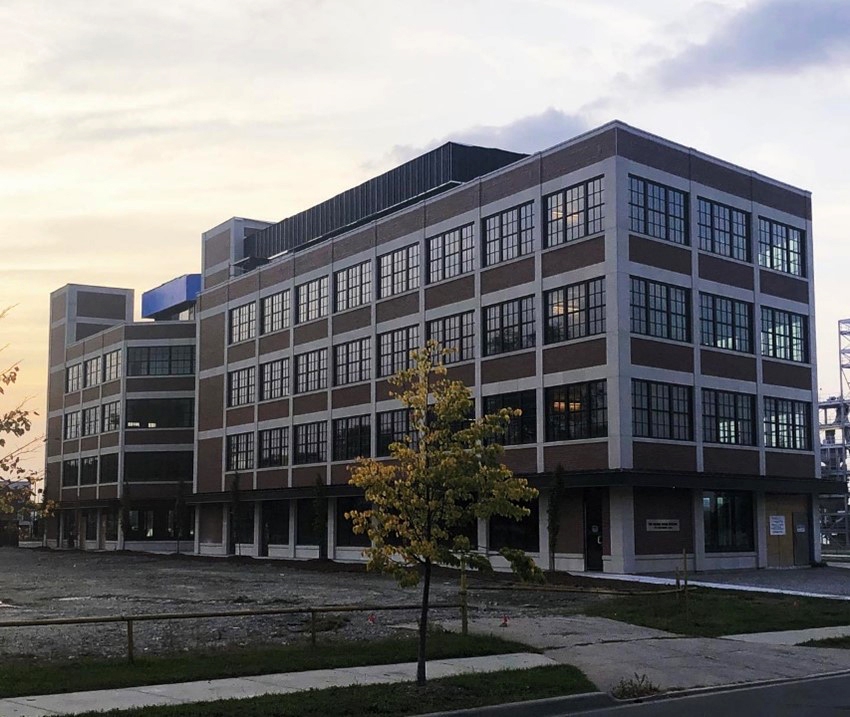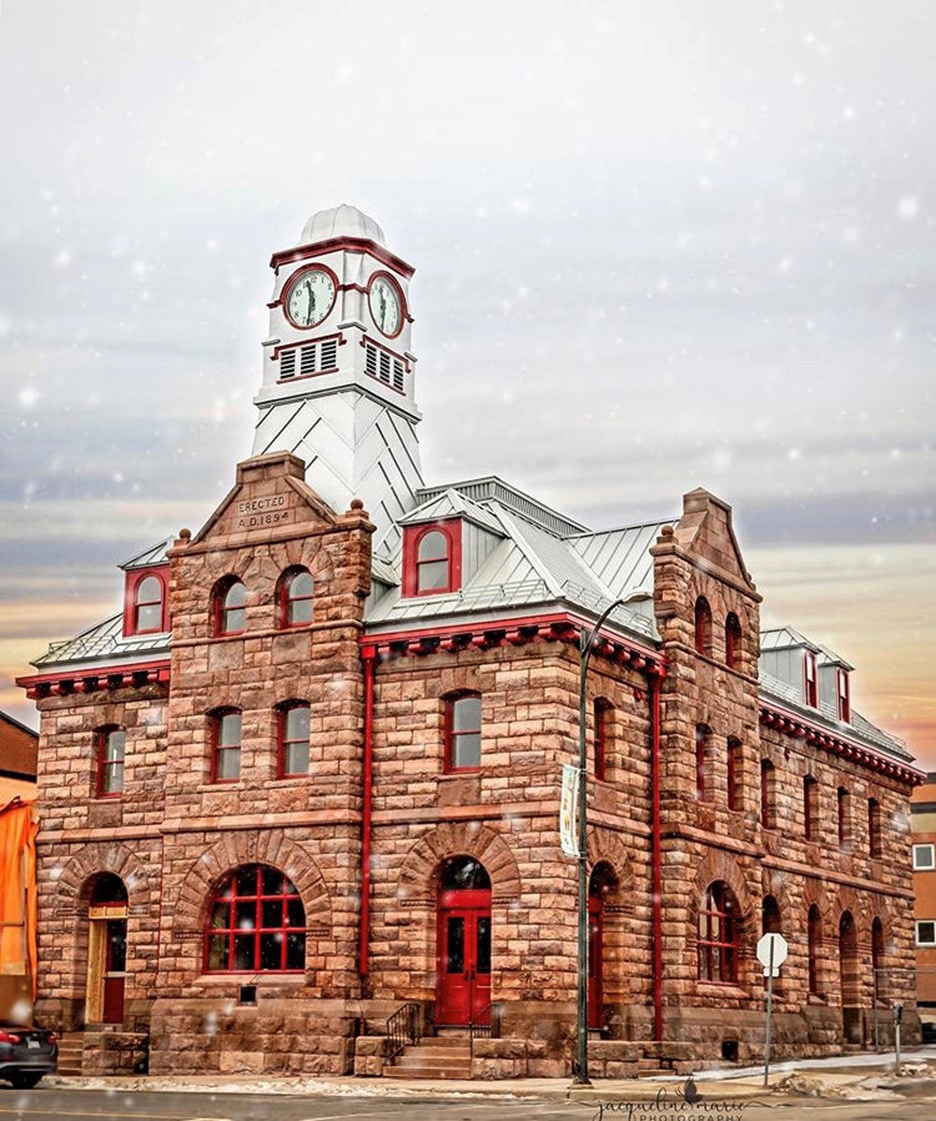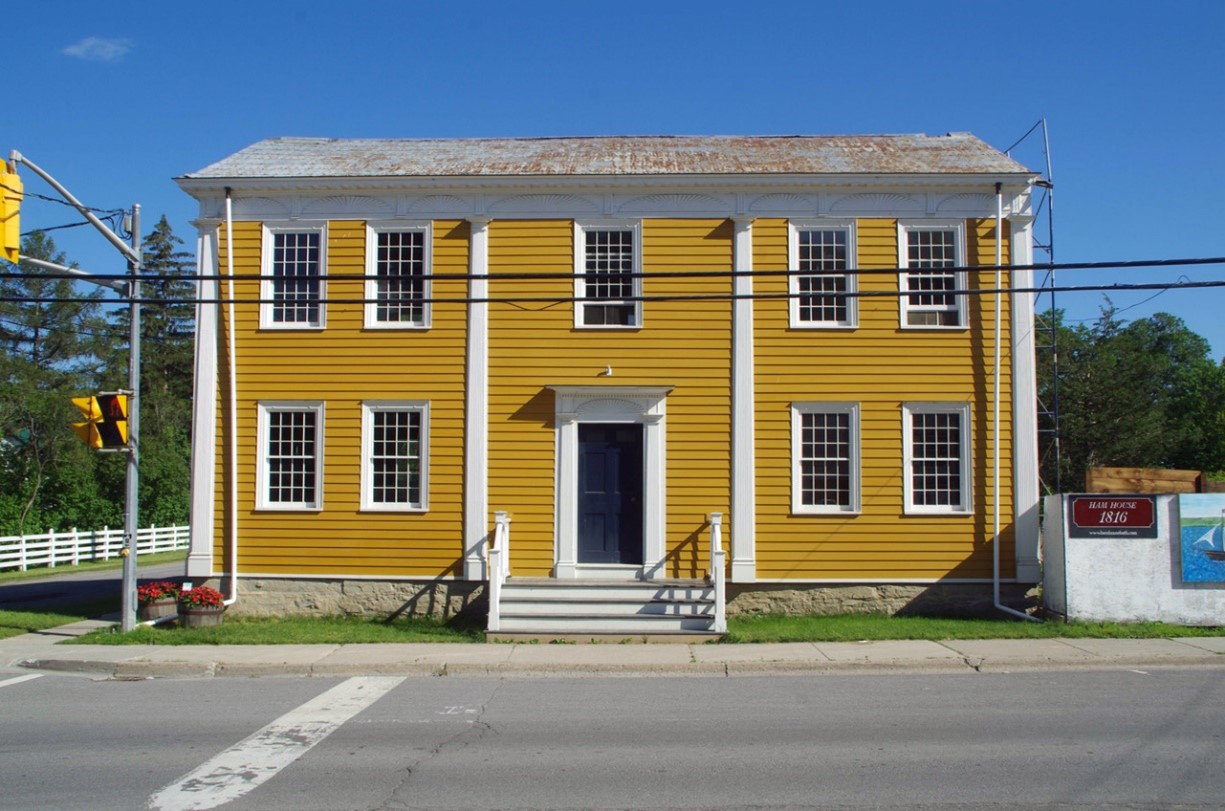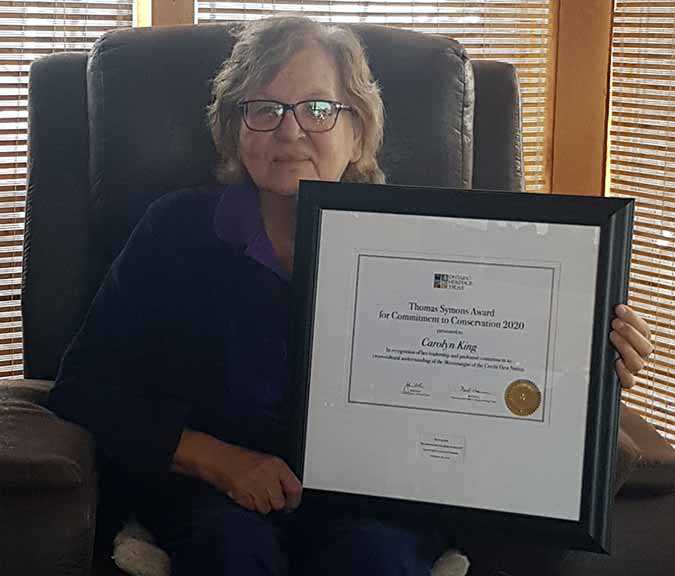Menu
2020 recipients of the Lieutenant Governor's Ontario Heritage Awards
“The Ontario Heritage Trust is proud to join the Lieutenant Governor of Ontario in recognizing these remarkable individuals and organizations for their outstanding achievements,” said John Ecker, Chair of the Ontario Heritage Trust. “Their leadership, commitment, and innovations in heritage conservation will in turn inspire others to make their own important contributions to our province.”
The annual Lieutenant Governor’s Ontario Heritage Awards recognize exceptional contributions to cultural and natural heritage conservation, environmental sustainability and biodiversity. This year’s award recipients encompass a wide range of unique and fascinating achievements in the conservation of Ontario’s heritage. They reinforce the potential of heritage to inspire, to stimulate creativity and to motivate us to pass down knowledge, narratives and histories, and a vibrant cultural environment to future generations. Congratulations to all!
We are delighted to introduce you to this year's recipients:
Lifetime Achievement:
Youth Achievement:
Individual:
Group:
Excellence in Conservation:
- The Adaptive Reuse of the Walker Power Building, Windsor
- The Conservation of the Tiger Moth Aircraft by the Edenvale Classic Aircraft Foundation
- The Digitization and Sharing of the Ontario History Journal Archive by the Ontario Historical Society
- Heritage at Home by Heritage Toronto and its Emerging Historians program
- The Performance of The Ward Cabaret
- The Restoration of the Fuller Post Office, Smiths Falls
- The Restoration of The Ham House, Bath
- The Revitalization of The Paradise Theatre, Toronto
Thomas Symons Award for Commitment to Conservation:
Lifetime Achievement
William Terry
William Terry has been a dedicated volunteer for 28 years in Norfolk County. His pursuits and infectious interest in heritage have enriched a local culture of heritage conservation and inspired local volunteerism. Terry has participated on the board of the Norfolk Historical Society. He served as president of a branch of the United Empire Loyalists Association of Canada, where he developed and coordinated arrangements for Loyalist Day in Ontario celebrations for over 10 years, and then later served as the organization’s national president for two years. His volunteerism has supported the recognition and enrichment of local heritage sites, including his work in documenting thousands of names and dates on headstones in more than 100 Norfolk cemeteries, and conducting educational programs and research at the Eva Brook Donly Museum and Archives. Terry’s efforts have been an inspiration to his community. In 2018, he received the Dogwood Award, which honours individuals and groups for outstanding achievements and contributions to heritage and culture in Norfolk County.
Youth Achievement – Individual
Charlene Rocha
Charlene Rocha is a community organizer and public speaker at St. Mary Catholic Secondary School in Pickering, whose dedication to the conservation of the natural environment has inspired the student body, and whose leadership and community organizing skills are having a substantial impact on the wider Pickering community. At her school, Rocha is involved in a wide variety of student-led initiatives, is a leading member of the environmental club, and a passionate advocate for environmental sustainability. Rocha’s leadership has inspired greater volunteerism among students. Outside of the school, her persistent drive to preserve and protect the natural environment is having a wider impact on the community as well, and she has appealed directly to elected representatives at all levels of government.
Paula Umeh
Paula Umeh is a student at Etobicoke’s Michael Power-St. Joseph High School. Umeh has developed and led Black History Month celebrations and performances annually at her school since 2017. She has served on the Black History Month executive since Grade 10, and has since taken a leading role in the development of the annual Black History Month event, including creating, teaching and performing African dances. Umeh’s work in developing and sharing these performances spreads knowledge of the meaning behind traditional clothing and song, raising cultural awareness of African and Caribbean history, and inspiring the student body and staff alike.
Youth Achievement – Group
The Archival Research of Italian-Canadian Immigration and Culture Project
The Archival Research of Italian-Canadian Immigration and Culture Project identifies and preserves the cultural heritage of Italian-Canadian immigration in Ontario, and shares these stories at conferences and through an online archive. The students’ work is supported by Brock University, University College (University of Toronto) and the University of Guelph. The students’ research unearthed oral traditions, expressions, language, art, music, social practices and traditions in Ontario’s historical Italian-Canadian community. These stories fit within a breadth and range of heritage interests. Through their academic projects, students have created oral histories and have included new archives, which include materials such as passports, photographs and educational training documents from private collections of immigrant families, as well as union documents and local heritage club activities. The students’ work has preserved historical documents, archives and oral histories, and has made these resources easily available to an international audience through an online platform.
Learn more about this project
Excellence in Conservation:
The Adaptive Reuse of the Walker Power Building, Windsor
Windsor’s Walker Power Building, inspired by the industrial architecture of Detroit’s seminal industrial architect Albert Kahn, is an iconic example of the city’s industrial heritage. The building had been derelict until Aleo Associates started an adaptive reuse project, which ran from 2016-19. This substantial effort restored and transformed the structure into a modern 21st-century commercial building and created a new anchor for community and economic development in the Walkerville neighbourhood. The adaptive reuse project featured limestone cladding on the concrete structural frame, retaining historical forms and proportion. Windows replicate the appearance of the original system. A 17-metre (55-foot) railroad turntable from the 1880s, complete with timbers and rails, was also unearthed during renovations, a surprise discovery. Following archaeological investigation, the developers decided to preserve this treasure and display it for users of the building by installing a glass floor over this historical find.
Project participants:
- Aleo Associates
- Patrick and Stephen Ducharme
The Conservation of the Tiger Moth Aircraft by the Edenvale Classic Aircraft Foundation
This De Havilland 82 Tiger Moth aircraft, also known as Audrey, was built by women during the Second World War and ̶ following a thorough two-year restoration ̶ still flies today. This is thanks to a complete conservation and restoration effort undertaken over thousands of volunteer hours, driven by community volunteers and skilled craftspeople at the Edenvale Classic Aircraft Foundation. Components were hand-made and hand-fitted to re-create original components based on the 1943 construction drawings. New technology was also incorporated, using new aircraft fabrics, stitching, sealers and paints to meet current safety-approved regulations. Audrey is the star attraction of the annual Gathering of the Classics festival and this restoration ensures that she will continue to draw interest and tourists to the community for many years to come.
Find out more about the Edenvale Classic Aircraft Foundation
The Digitization and Sharing of the Ontario History Journal Archive by the Ontario Historical Society
The Ontario History Journal, formerly Papers & Records, is one of the oldest history journals in Canada, established by the Ontario Historical Society (OHS) in 1899. From 2013-20, the OHS digitized the full text of over 2,000 articles and book reviews from 280 issues, making the archive the largest single collection of stories about Ontario’s history. Over $100,000 was raised to undertake this project, which involved the scanning and digitization of over 2,000 unique articles and reviews, the production of a digital, interactive index, copyright research and acquisition, staffing and project management. Sixty-four consultations were held with stakeholders over the course of the project. The journal’s archive contains a wealth of original documents and new research, written by a range of prominent Ontario historians, and comprises one of the most important sources for the history of the province. Through digitization, the Ontario History Journal has been made available to a much larger audience, and it has also been safeguarded for the use and enjoyment of generations to come. Since the archive launched, almost 2,500 back issues have already been downloaded, and it has driven membership sign-ups for the OHS, which will help to keep it producing new editions at a high level of scholarship for years to come.
Explore the digitized back issues of the Ontario History Journal
Heritage at Home by Heritage Toronto and its Emerging Historians program
Heritage at Home was a COVID-19 initiative of Heritage Toronto, designed to create digital content experiences to ensure continued public engagement with the city's heritage while the Spring 2020 COVID lockdown measures were in place. Heritage at Home featured walking tours, articles and live-streams, and included the exploration of new social media formats and the development of new campaigns. Digital content was researched and produced to focus on subjects like public health history or Toronto's Black heritage. The project activated a range of partnerships with scarce resources and was driven by the work of young professionals through Heritage Toronto’s Emerging Historians program: 13 young professionals who brought new ideas, energy and perspectives that will help drive and diversify the heritage sector. This program includes online experiences focusing on Toronto’s Indigenous Roots and Little Jamaica, ensuring that new content created during the COVID-19 pandemic also contributed to building social equity in the heritage sector. Heritage at Home content has enriched the organization’s digital strategy and generated substantial growth in its online audience ̶ attracting 25,000 web visitors in 2020, up from only 3,000 the previous year.
Check out Heritage Toronto's website
The Performance of The Ward Cabaret
The Performance of The Ward Cabaret uncovers and presents histories of Toronto’s vanished St. John’s Ward through music. It propels audiences into the world of The Ward – a place bordered by Yonge Street to the east, University Avenue to the west, Queen Street to south, and College Street to the north – that was Toronto’s earliest significant immigrant enclave from the mid-19th to the mid-20th centuries. With Jewish, Irish, Italian, Chinese, African and a number of other ethno-cultural communities living side by side in great density, The Ward offers incredibly rich stories that speak to the urban experience of life in Toronto. When the people of The Ward were displaced by the city, and its homes and places of business razed to make way for New City Hall and Nathan Philips Square, the physical community was erased from the fabric and memory of the city, and erased from Toronto’s sense of self. The Ward Cabaret performs and restores the vibrant stories and street sounds of St. John’s Ward, bringing new life to a vanished space and using music to forge a connection with the past.
Project participants:
- Artistic Director: David Buchbinder
- Executive producers: John Lorinc, Michael McClelland
- Writer: Marjorie Chan
- Co-Director: Leah Cherniak
Join The Ward Cabaret as they celebrate their Lieutenant Governor’s Ontario Heritage Trust Award win on Facebook and Twitter.
The Restoration of the Fuller Post Office, Smiths Falls
More than 80 post offices were designed by the architect Thomas Fuller for the federal Department of Public Works between 1881 and 1897. These iconic buildings anchor many communities in Canada and communicate the power and prestige of the then-new federal government. The Fuller Post Office in Smiths Falls was completed in 1894 and has substantial architectural and cultural value. Bruce Linton, founder of Canopy Growth, purchased the building and undertook a 15-month restoration that was completed in 2020. Bruce and his team of 75 professionals, 95% of which were local to Smiths Falls, extensively researched this building and restored valuable architectural details and millwork using traditional methods, or sourced accurate materials where original sources or replacements were unavailable. This project is playing an influential role in enriching a local culture of conservation and has inspired other built heritage conservation projects on the same commercial block. It has motivated those builders to follow suit in quality, research and conservation ethics, and generated additional commercial and residential development in Smiths Falls’ downtown commercial area.
Project participants:
- Bruce Linton, Property owner
- Dwight Brown, Consultant
- Eddie Edmundson, Architect
- Mike Cleland, Engineer
- Paul Moore, Masons
- Tom Sullivan, Plumbers
- Mike Prevost, Electrician
- Dennis O'Connor, HVAC
- Dave Ritskes, Ironwork
- Andy Brown, Millwork
- Bruce Healey, Windows
Local news coverage celebrates this win.
The Restoration of The Ham House, Bath
The Ham House is a rare federal-style commercial/residential structure in Bath, dating from 1816. Previously in poor condition and seen as a liability and eyesore, The Ham House was in need of attention. So, the community rallied to its defense and both saved and restored the property. Community members Ron Tasker (a Director of the Frontenac Heritage Foundation) and Bonnie Crook took the initiative to restore the house, and completed the majority of the work themselves, with the support of friends and volunteers. This work met high conservation standards: extensive research on the property’s historical uses was undertaken and the building was lifted, its foundation rebuilt, and the neoclassical and other water-damaged structures replaced and restored. The project has shown a strong initiative and drive to conserve architectural heritage, and convinced the local council that poor material conditions on an exceptional heritage structure are not insurmountable conditions for its restoration. The community now sees this piece of built heritage as an asset and hopes that the restoration will become an anchor for economic development and tourism in Bath.
Project participants:
- Ron Tasker and Bonnie Crook
- David White, DJ White Restorations
- Jim Crutcher
- Konstantinos Panageotopoulos
- Virginia Thompson
- Eric Rebiere
- Loyalist Township
Learn more about the history and the restoration of The Ham House.
The Revitalization of The Paradise Theatre, Toronto
The Paradise Theatre in Toronto’s Dovercourt neighbourhood showcases the potential of historical neighbourhood theatres to become hubs for cultural and community enrichment. From 2014-19, the project team undertook careful conservation of the exterior façade, as well as the retention and rehabilitation of the east wing. This work meant removing alterations to the building that had diminished its art deco character over time, including the wall sign, ceramic tile overcladding and the generic replacement of doors and windows. Compatible contemporary replacements were designed in keeping with the detailing and proportions of the original period of construction, including the reconstruction of the lost Paradise blade sign (based on the careful analysis of historical photos and research) into comparable theatre signs from the era, and the re-creation of the stainless-steel box office and entrance doors. The project balances the celebration of the building’s art deco character with modern theatre and performance space requirements. The Paradise Theatre now has a street presence that speaks to its original 1937 detailing, with an updated interior that allows for a flexible use of performance space and diverse community programming.
Project participants:
- Site owner: Moray Tawse
- Prime architect: Ware Malcomb
- Heritage architect: ERA Architects
- Interior design: Solid Design Creative
- Signage: Pride Signs
- Masonry: Clifford Restoration
- Stainless steel: Brascon Stainless Steel Fabricators Inc.
Thomas Symons Award for Commitment to Conservation:
Carolyn King
Carolyn King is a public educator whose leadership and profound efforts have significantly enriched cross-cultural knowledge and understanding of Indigenous culture and worldviews, particularly in the Greater Toronto Area. From 1997 to 1999, King was the elected Chief of the Mississaugas of the Credit First Nation (MCFN), and its first woman elected to the position. She has over 20 years’ experience with the Consultation and Outreach Office of the Mississaugas of the Credit First Nation, and over 25 years of work experience in the field of First Nations community development. She is an in-demand speaker and educator regarding her knowledge and insights on cross-cultural knowledge, understandings and community development. King is frequently engaged by government, colleges and universities, businesses and community organizations to do cross-cultural training. Through her leadership and development of the Moccasin Identifier Project, she has enriched the general public’s understanding of Indigenous history of place in the Greater Toronto Area. This project was developed by King in partnership with the Mississaugas of the Credit First Nation and The Greenbelt Foundation to promote public awareness of significant cultural historical sites and the ancestral presence of First Nations, Métis and Indigenous communities.




